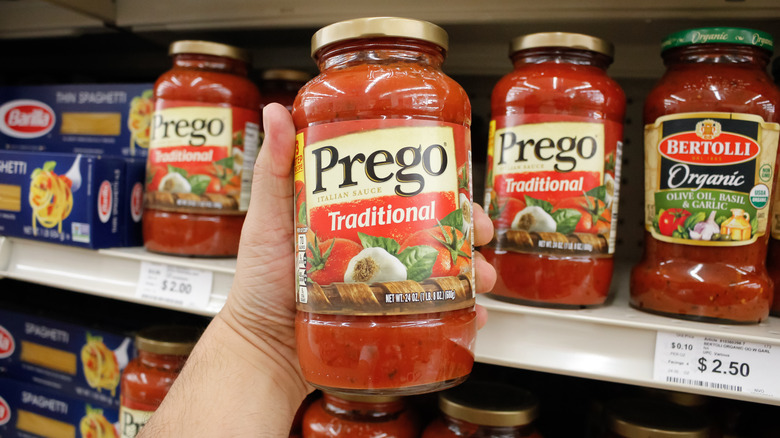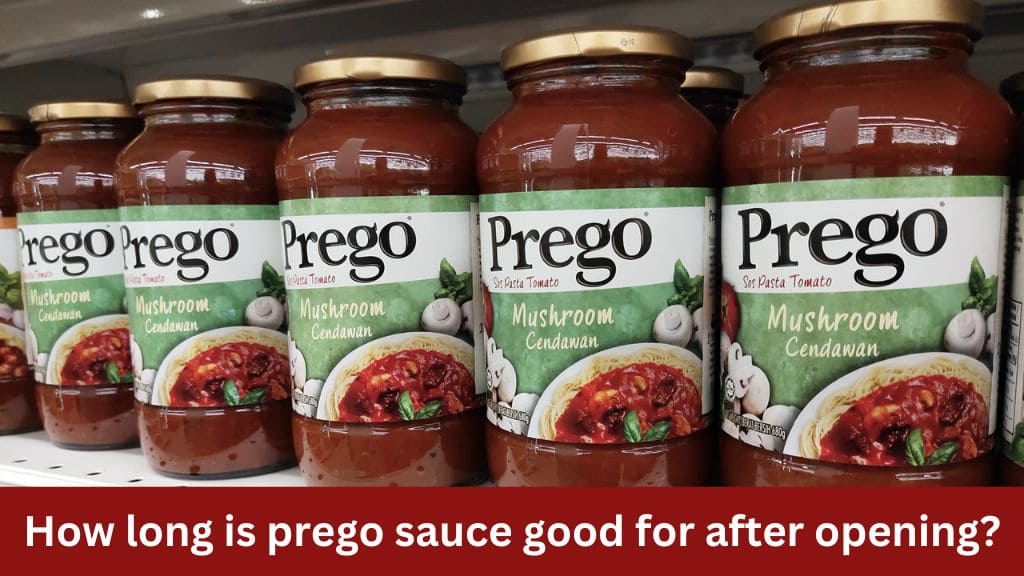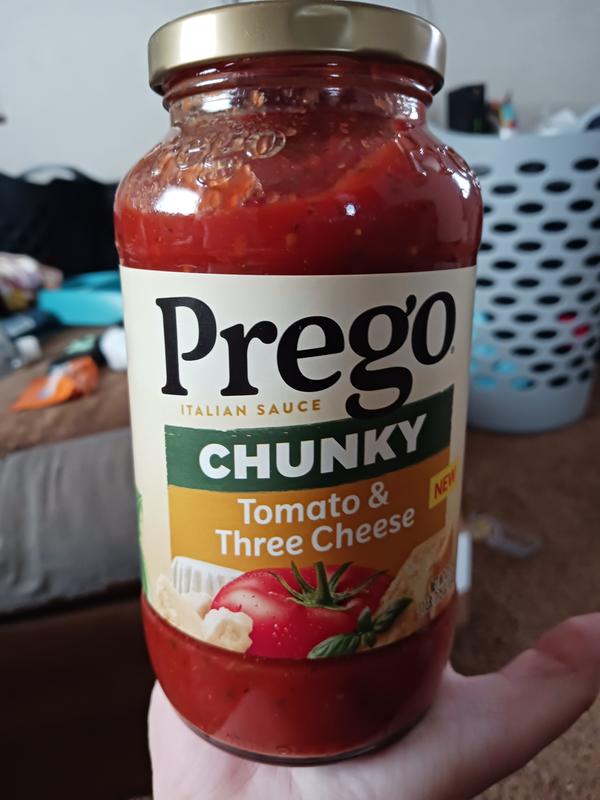Prego Traditional Italian Pasta Sauce is a beloved staple in many kitchens, known for its rich flavor and convenience. However, once you crack open a jar of this delectable sauce, questions arise about its longevity. How long can you safely enjoy Prego sauce after opening? In this comprehensive guide, we’ll delve into the factors affecting the shelf life of Prego sauce post-opening and provide you with practical tips to maximize its freshness and flavor.
Understanding Prego Sauce Shelf Life

Unopened Jars
Unopened jars of Prego sauce boast a remarkable shelf life, primarily attributed to the preservation processes implemented during manufacturing. These processes involve careful selection of ingredients, precise blending, and thermal treatment to ensure the sauce’s stability over time. The packaging also plays a crucial role, as it provides a barrier against oxygen and light, further preserving the sauce’s quality.
When stored in optimal conditions, such as a cool, dry pantry or cupboard away from heat and sunlight, unopened jars of Prego sauce can maintain their freshness and flavor for an extended period. The typical shelf life ranges from 12 to 18 months, though it’s essential to adhere to the printed expiration date for optimal quality.
Opened Jars
Once the seal is broken and the jar of Prego sauce is opened, its shelf life undergoes a notable change. Exposure to air and potential contaminants introduces factors that can compromise the sauce’s quality and safety. To mitigate these risks, prompt refrigeration is necessary.
Refrigerating the opened jar at temperatures below 40°F (4°C) slows down the growth of bacteria and helps preserve the sauce’s freshness. However, despite refrigeration, the sauce’s shelf life is significantly reduced compared to its unopened counterpart. For best taste and safety, it’s recommended to consume Prego sauce within 3 to 5 days after opening.
Storage Guidelines
Unopened Jars
Proper storage of unopened jars of Prego sauce is essential for maintaining their quality until the printed expiration date. Here’s a closer look at the storage guidelines:
- Optimal Conditions: Store unopened jars in a cool, dry place, such as a pantry or cupboard. These locations offer protection from heat and sunlight, which can degrade the sauce’s quality over time.
- Away from Heat and Light Sources: Heat and light can accelerate the deterioration of food products, including pasta sauce. Keep the jars away from stovetops, ovens, and direct sunlight to preserve the sauce’s freshness.
- Adherence to Expiration Date: Always check the expiration date printed on the jar. While Prego sauce typically maintains its quality until the indicated date, consuming it beyond this point may compromise taste and safety.
Opened Jars
Once you’ve opened a jar of Prego sauce, proper storage becomes even more critical to maintain its freshness and safety. Consider the following storage guidelines:
- Prompt Refrigeration: Immediately refrigerate the opened jar after use to slow down bacterial growth and preserve the sauce’s quality. Ensure the refrigerator is set to a temperature below 40°F (4°C) for optimal preservation.
- Seal Tightly: After each use, seal the jar tightly to minimize exposure to air and contaminants. A securely closed lid helps maintain the sauce’s flavor and prevents spoilage.
- Minimize Exposure to Air: Limit the time the jar is left open during serving to reduce the sauce’s exposure to air. Promptly return the jar to the refrigerator after dispensing the desired amount of sauce.
Extending Shelf Life: Freezing Tips

Freezer-Safe Container
- Selection of Container: Pour the leftover Prego sauce into a freezer-safe container. Choose a container made of materials suitable for freezing, such as glass or plastic containers specifically labeled as freezer-safe. Avoid using containers that may crack or break when exposed to low temperatures.
- Leave Space for Expansion: Leave some space at the top of the container to accommodate the expansion of the sauce as it freezes. This precaution prevents the container from cracking or bursting due to pressure from the expanding liquid.
Proper Thawing
- Refrigerator Thawing: When ready to use the frozen Prego sauce, thaw it in the refrigerator rather than at room temperature. Slow thawing in the refrigerator helps maintain the sauce’s texture and flavor while minimizing the risk of bacterial growth.
- Avoid Room Temperature Thawing: Refrain from thawing the sauce at room temperature, as this can lead to uneven thawing and increase the likelihood of bacterial contamination. Additionally, room temperature thawing may compromise the sauce’s taste and texture.
Storage Duration
- Freezer Lifespan: Properly stored, frozen Prego sauce can maintain its quality for an extended period. Generally, frozen sauces can last for 2 to 3 months in the freezer without significant loss of flavor or texture.
- Labeling and Dating: To keep track of the sauce’s storage duration, consider labeling the freezer container with the date of freezing. This practice ensures that you can use the sauce within the recommended timeframe for the best taste and quality.
Signs of Spoilage

Visual Indicators
- Mold Growth: Mold growth is a clear indication that Prego sauce has spoiled. Mold may appear as fuzzy spots or patches in various colors, such as green, white, or black, on the surface of the sauce. If you notice any mold growth, do not consume the sauce and discard it immediately.
- Discoloration: A noticeable change in color or the presence of unusual discoloration can also indicate spoilage in Prego sauce. Any deviation from the sauce’s typical coloration, such as darkening or browning, may signal that it has gone bad and should not be consumed.
Olfactory and Taste Clues
- Off Odor: Before tasting the sauce, always smell it first. An off odor, such as a sour, fermenting, or generally unpleasant smell, indicates that the sauce has spoiled and is no longer safe for consumption. If the sauce emits an unusual or foul odor, it’s best to discard it to avoid potential health risks.
- Taste: While it’s not recommended to taste spoiled food, if you detect an off odor, it’s likely that the taste of the sauce has also been compromised. Safe Prego sauce typically has a pleasant aroma of tomatoes and herbs, whereas spoiled sauce may taste sour or unpleasant.
Texture and Consistency Changes
- Separation: An early indicator of spoilage in Prego sauce is the separation of liquids. If you notice water pooling on the surface or separation of ingredients, such as oil floating on top, it may signify that the sauce has started to spoil.
- Thickening or Lumps: Spoiled Prego sauce may exhibit changes in texture, becoming excessively thick or developing lumps. Any significant alteration in the sauce’s consistency from its usual smooth texture should raise concerns about spoilage.
Usage Recommendations
Proper Utensil Use
- Clean Utensils: Always use clean utensils when serving Prego sauce to prevent contamination. A clean spoon or ladle ensures that no harmful bacteria are introduced into the sauce, maintaining its freshness and safety.
- Airtight Seal: After each use, ensure that the jar is tightly sealed to prevent air exposure and maintain the sauce’s flavor. Proper sealing also helps preserve the sauce’s consistency and prevents it from drying out or becoming contaminated.
Maximizing Leftovers
- Transfer to Airtight Container: When storing leftover Prego sauce, transfer it to an airtight container to maintain freshness and prevent spoilage. Alternatively, ensure that the original jar is tightly sealed to minimize exposure to air and contaminants.
- Refrigeration: Promptly refrigerate the sauce after each use to slow down bacterial growth and extend its shelf life. Refrigerated Prego sauce can last for 5 to 10 days, provided it is stored properly in the refrigerator at temperatures below 40°F (4°C).
Food Safety Practices
- Inspection Before Use: Always inspect the sauce before use for any signs of spoilage, such as mold growth, off odors, or unusual texture. If you detect any abnormalities, discard the sauce immediately to prevent foodborne illness.
- Adherence to Expiration Date: Pay attention to the expiration date printed on the jar and consume the sauce before this date for optimal quality. Consuming expired sauce may compromise taste and safety, so it’s best to err on the side of caution.
Conclusion
The shelf life of Prego sauce after opening depends on proper storage and handling. Refrigerate promptly, consume within 3 to 5 days, and freeze for extended storage if necessary. By following these guidelines and staying vigilant for signs of spoilage, you can savor the deliciousness of Prego Traditional Italian Pasta Sauce with confidence and peace of mind.






